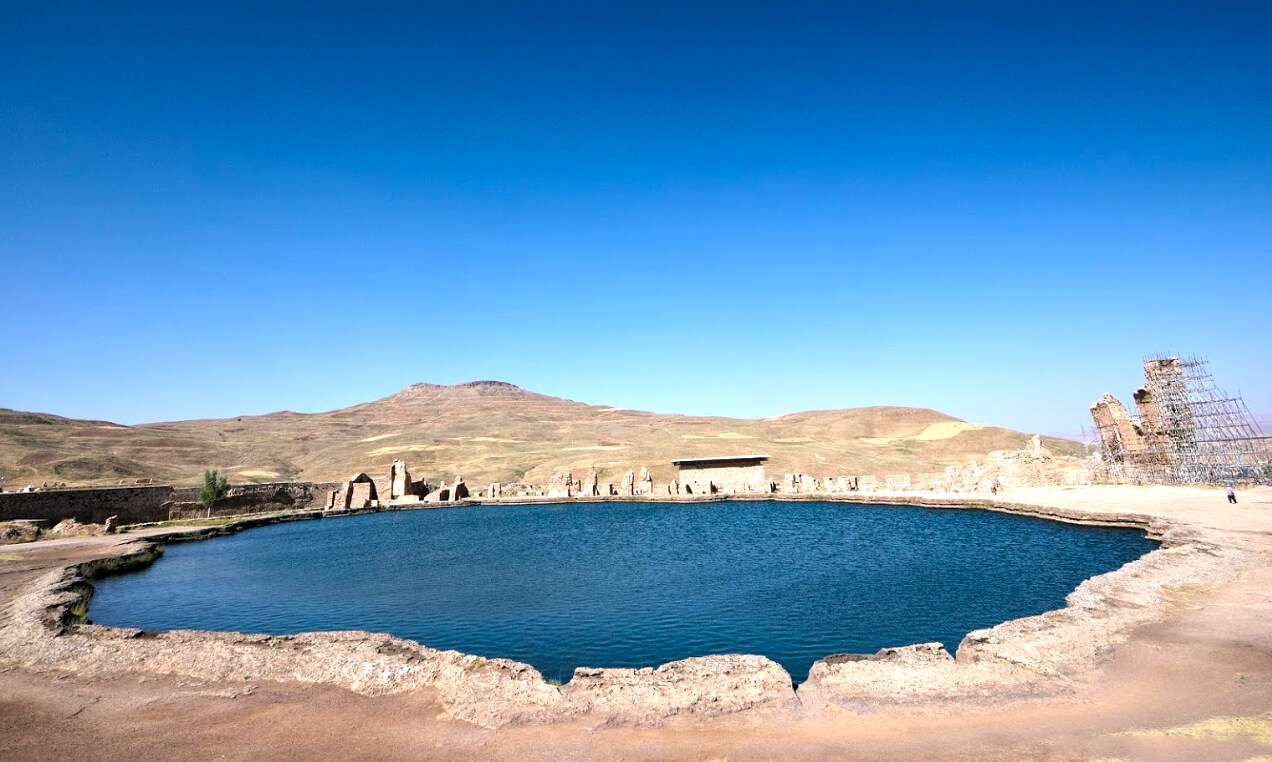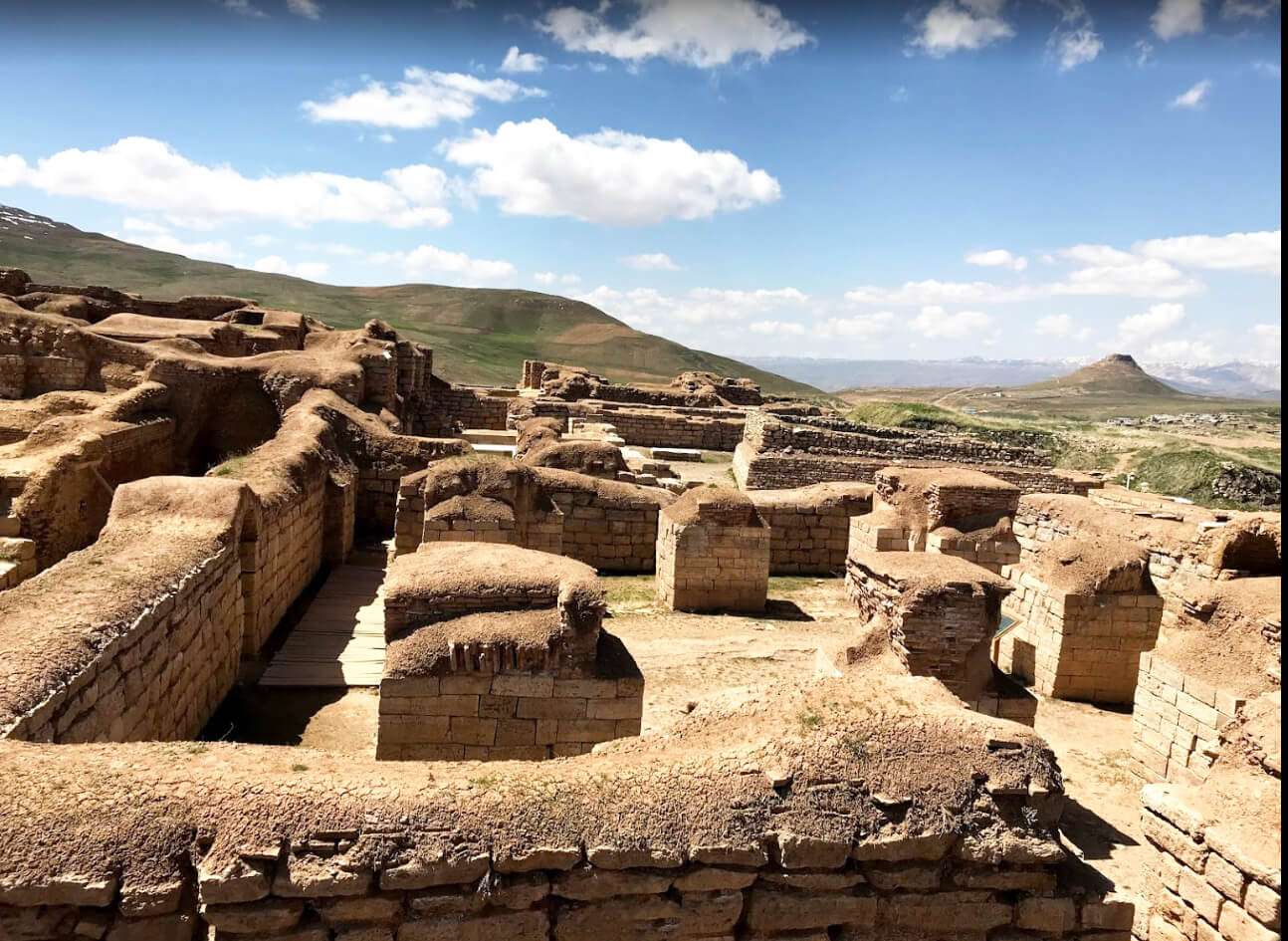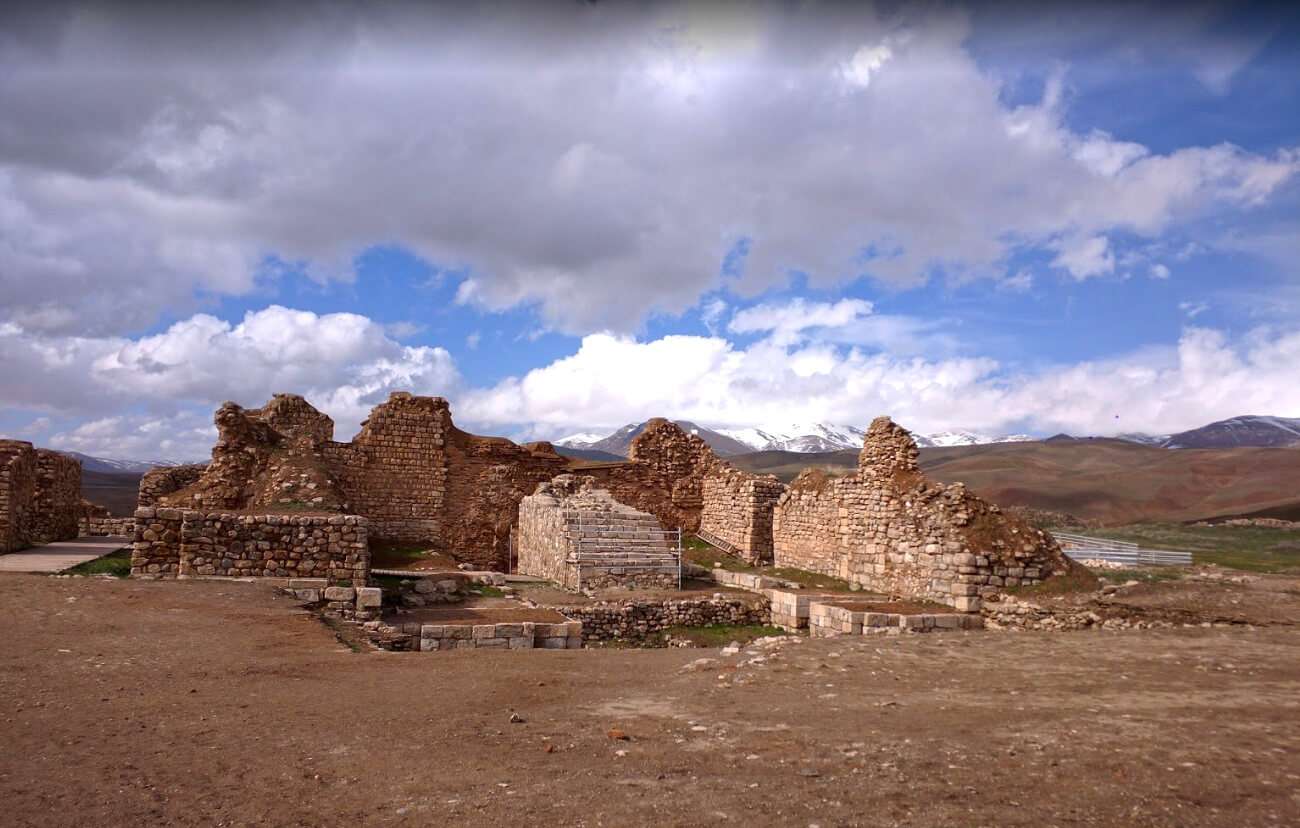Takht-e Soleyman

- Visiting
Takht-e Soleyman in Takab
- ThemeHistory and Culture
- CodeIRSG1645
- Duration2 hr(s)
- Tell044 4545 5312
Visiting ancient sites in the northwest of Iran, including a Zoroastrian sanctuary and a Sassanid fire temple.
- Spring8:00-20:00 *
- Summer8:00-20:00
- Autumn8:00-18:00
- Winter8:00-18:00
* Best Time
Photos of the Takht-e Soleyman
Explore the Takht-e Soleyman
Takht-e Soleyman
The remarkable Sassanid and Ilkhanid archeological site sits on a sacred mountaintop, and is surrounded by a mountain chain with a height of more than 3000 meters. Reputed as the birthplace of Zoroaster, Takht-e Soleyman (the Throne of Solomon) is located in Western-Azerbaijan Province, in the vicinity of Takab city. This UNESCO Heritage Site is one of the most well-known centers of history and civilization in Iran. In addition, it was the biggest religious, educational, and social center in the Sassanid era. This archeological ensemble represents five historical eras of the ancient Persia, especially the Sassanid architecture. However, it also suffered from various attacks during the history, especially by the Byzantine Emperor, Heraclius, in 628. As a consequence of this war, Takht-e Taqdis, the first monument in this area built by Khosrow II in 618, was completely destroyed. Historically, Takht-e Soleyman was called Shiz up to the early Islamic era. Later, in the Ilkhanid era, it was named Soqurluq and, finally, it became known as Takht-e Soleyman after the Timurid conquest of Persia (15th century).
The early settlements in this area date back to the first millennium BC. The Medians began constructing mudbrick buildings and this tradition was taken up by their successive dynasty, the Achaemenids who used pottery, stone and bronze-ware too. The tradition of constructing buildings by mudbrick also continued in the Sassanid era. The architectural transformation from mudbrick structures to structures made of stone and baked bricks started approximately in 528 C.E in this site. The Zoroastrian sanctuary was the first mud-brick edifice of this ensemble which, at the order of Khosrow I, was turned into a stone structure.
After the Mongol invasion, Abaqa, the second king of the Ilkhanids ordered a palace to be built on the old sanctuary for the royals, especially the women of his court. Generally, Ilkhan rulers constructed and renovated several edifices in this site, of which few have survived to the present times. With the fall of Mongols, this site was destroyed and blocks of stones and columns used in its construction were reused to build a mosque, a mausoleum, a bathhouse and living houses. However, they were destroyed later and the remaining decorative tiles were transferred to the Reza Abbasi Museum in Tehran.
Takht-e Soleyman has been visited and described by many western travelers and scholars, like Henry Rawlinson and Houtum Schindler, since the 19th century. However, it underwent its first archeological investigation by Arthur Pope in 1937.
Highlights
- Azar Gushnasp Fire Temple
- Soleyman Lake
- Soleyman Prison
Azar Gushnasp Fire Temple
Āzar Gushnasp literally means the fire of the Warrior Kings. This temple, located on the northern part of the Soleyman Lake, used to hold one of the three holy fires of the Sassanids. Azar Gushnasp has its roots in an old legend. As the story goes, Keykhosrow, the king of the legendary Kiani dynasty, is indulged in conquering the Bahman fortress when, by the will of bad devils, the sky pales, the night falls and darkness begins to rule the world. But, unexpectedly, a streak of fire falls from the sky and sets ablaze the mane of Keykhosrow's horse, enlightening the world. So, by the light spreading from the mane of his horse, Keykhosrow manages to conquer the fortress and celebrates his victory by making the fortress the eternal house that heavenly fire. Keykhosrow calls this fire Azar Gushnasp, literally meaning the fire of the male horse.
This fire temple is a Chahartaqi (four arches) structure which used to be surrounded by corridors in which the ritual of praying was held. It contained a central square hall crowned by a big brick dome and a fire altar placed at the center of the fire temple. The evidence shows that in the Sassanid era there were two gates for entering the fire temple, one on the south, for the royals and one on the north, for the normal pilgrims.
Beside this fire temple, a splendid porch known as ayvan-e-Khosrow is also located on the north-west of the Takht-e Soleyman complex. It used to be the audience hall and the resting place of the Sassanid rulers, coming to this place at the time of holding rituals. It was made of red brick and Sarooj mortar which is the reminiscent of the reputed Taq-e Kasra.
Unfortunately, this significant Sassanid fire temple was ruined in 624 by Heraclius.
Soleyman Lake
The lake is 80 * 120 meters with a depth of 60 meters. Its water is supplied from a spring placed at the bottom of the lake. The temperature remains unchanged during the Summer and winter, so does the level of the water, due to two water streams flowing on the north and south of the lake. There are several mysterious stories about this lake, like the existence of countless treasures in the depth of the lake.
Soleyman Prison
Settled over the remains of the pre-historic or Median sanctuary, a conical mountain with a depth of 70 meters is located 3 kilometers to the west of Takht-e Soleyman. This 100 m cylindrical mountain appeared due to the volcanic activities. It is believed by public that Suleiman had imprisoned the evils who disobeyed him in this place.




